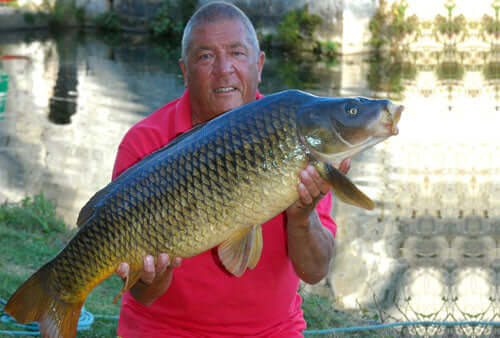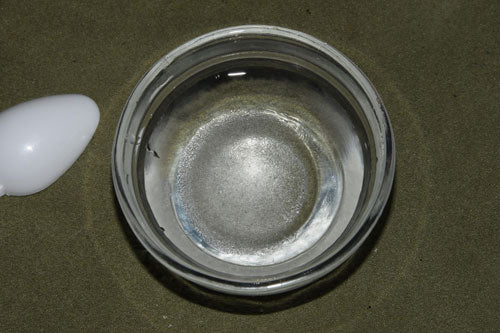
Old dog & new tricks
Share
As you will have probably gathered if you have read some of my other contributions to these blogs, I am getting on a bit and have circled the block more than a few times. As the old dog of the title I am always looking to find new tricks to play on the carp as they become increasingly hard to catch as pressure on them grows by the day.
Here are a couple that have stood the test of time and then you might like to try yourself.
1. Liquid Betaine HCL.
I have been quoted in the past as saying that I would rather go fishing without my trousers than fish without Betaine…I wasn't kidding, either! Keith Sykes whispered in my shell-like, the full SP about this hugely effective attractor way back when Noah was a lad, and I have been a massive fan ever since.
There are two types of Betaine, the hydrochloride version and the anhydrous version and both have their part to play in carp bait. Betaine is naturally present in foodstuffs and sources include fish, beets, legumes and wheat. It is also present in some crustaceans notably the green lipped mussel found in South Pacific regions, hence the suitability of the extract of Green Lipped Mussel as a carp attractor. Both types are soluble in water, with the HCL more readily dissolving into a solution. These two additives are among the best carp bait additives going.


To demonstrate the solubility of Betaine HCL take a look at these photos. In the first you can see a measured 3g spoon of Betaine HCL crystals and a small bowl containing 15ml of tap water.

In this next photo Betaine, the HCL has been emptied into the water. You can see the crystals on the bottom of the bowl.
This is the same bowl a few seconds later after the contents have been stirred briefly. It is clear that the crystals have been dissolved in the water to form a solution.

In this liquid form the solution has a low pH creating the strong acidic feeding trigger when introduced to the lake or river. We have looked at this aspect of attraction in previous blogs but briefly let me explain why this is important. Carp rely to a large extent on detecting the acidic signals given off by their natural foodstuff, which excretes amino acids. Carp can detect these in minute quantities and we can mimic the acid attraction by creating it artificially through acidic triggers in our bait. This trigger causes a localised pH change and it is this that the carp recognise as an investigation signal. That is to say, their senses tell them that there is a possible food source in the area that needs further investigation.
This liquid Betaine is very versatile and a hookbait soaked in the solution will get a considerable boost in its pulling power. You don't have to leave it in for ages, a brief soak will be sufficient.

I use a lot of this stuff so I make it on a large scale. Take a bottle with a spray attachment in the top. Into this pour 150ml of water.



Next, weigh out 50g of Betaine HCL.

This is then added to the water in the spray bottle using a small funnel. Finally give the bottle a brief shake to dissolve the Betaine and Bingo! there you have it; a handy spray bottle of home-blended liquid Betaine HCL. Finally - in case your memory is as bad as mine - label the bottle so you don't forget what is in it!



This excellent attractor can now be used in a multitude of ways. I use it as a booster to spray over a batch of freshly made bait, or you can use it on a bucket of particles or seed. You can also use it as a hookbait spray or as a bait soak.
2. High Attract Hookbaits.
Here's another little trick that is well worth trying. We have all heard by now about so-called 'cultured' bait and 'customized' hookbaits, yes? Well here's how you can make your own!

First, take a batch of baits, say enough for a weekend session (these are homemade Robin Red and Chilli boilies from Haith's Baits). Place these in a bowl and spray them with a generous amount of the liquid Betaine you have just made.


Now you need to create a blend of your 'dry' attractors and here you can see the ones I am going to use. You can, of course, use a single attractor or a blend. You can also add powdered flavours, colours or other powdered attractors. Here I shall use Liver Extract, Spirulina, Green Lipped Mussel Extract and powdered Kelp.

In a separate small pot with a well-fitting lid add these powders in equal amounts. Here's a heaped teaspoon of Kelp, the same amount of Spirulina and of Liver Extract. In fact, I add another teaspoon of Liver as it is quite light for its volume. Finally, I add a spoonful of the GLME.


These powders are all added to the small pot, then the lid is put on and give the pot a good shake to blend the powders evenly.

Place the still-damp baits in a polythene bag with a press-close or zip-close mouth and finally add the contents of the small pot, the attractor powders in other words. Now give the bag a good shake to coat the baits with the powders and the leave the bag, sealed, overnight.


Finally empty them out onto a grid, newspaper or a tray to air dry. The coating protects the heart of the bait from atmospheric damp for around a fortnight or so. Thereafter the baits should be frozen.

I tend to make up a batch three or four days before I go fishing and I will use the whole batch during the session, hence why I suggested at the start that you make enough for, say, a weekend trip.
These customised hookbaits are tweaked with totally natural attraction so they will appeal to both wild, uncaught river carp and their more-pressured kin that live in the UK's lakes. Here's one I caught earlier.

Spring is just around the corner so it's time to get out on the bank and enjoy!

